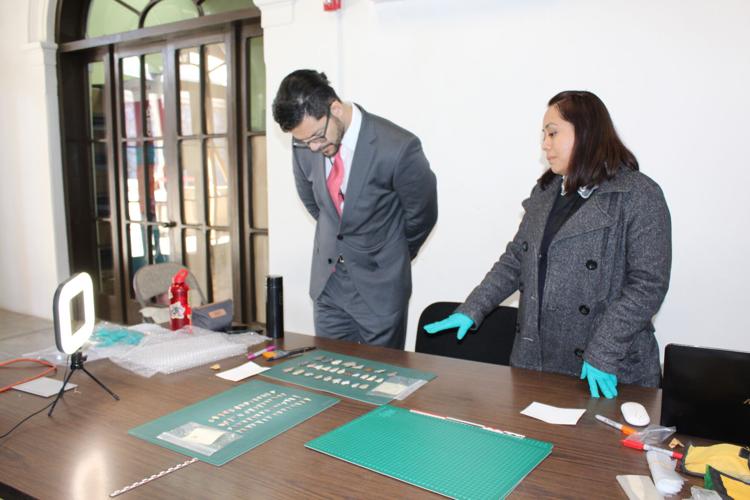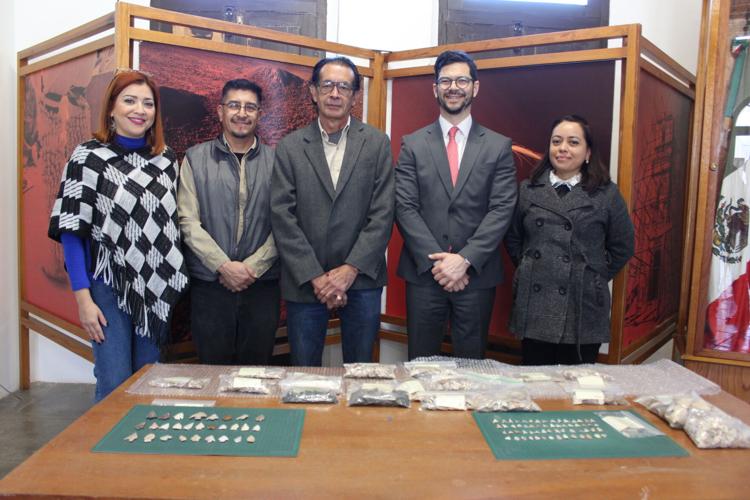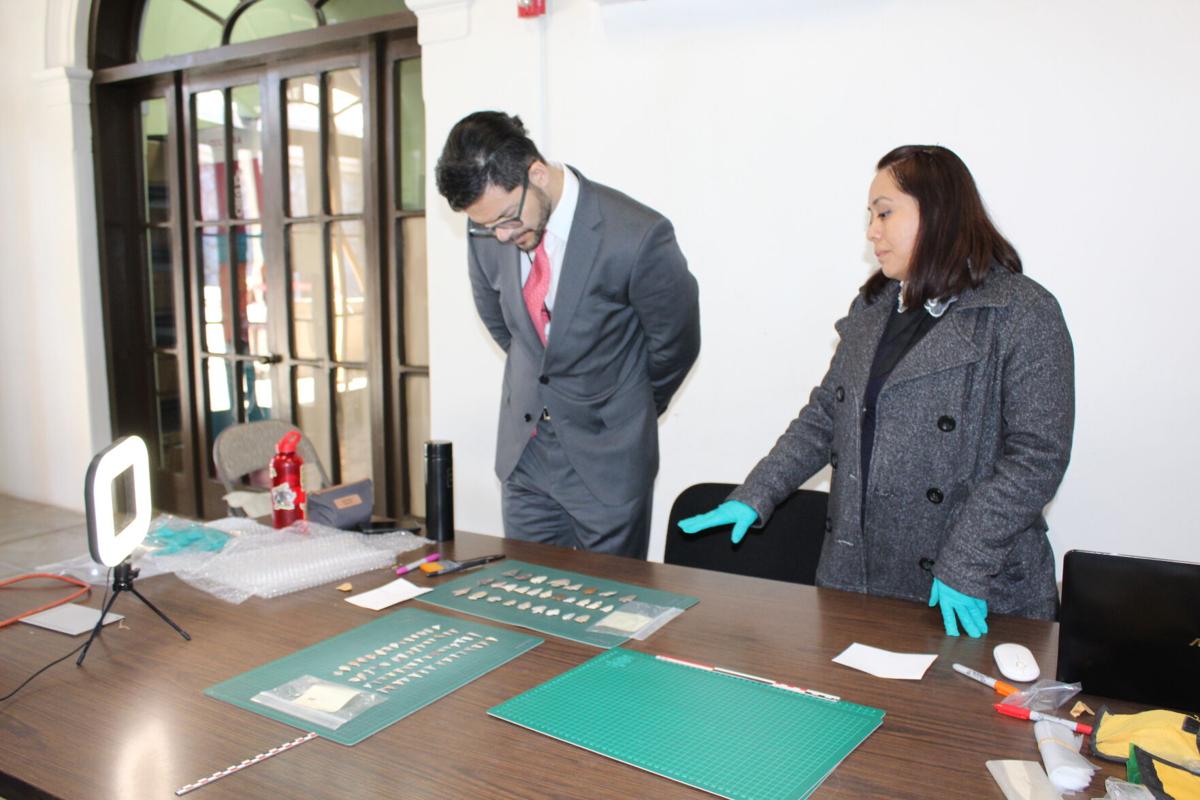ENGLISH VERSION BELOW
México es una potencia mundial en términos de diversidad cultural. Tiene 35 bienes considerados patrimonio cultural de la humanidad por la UNESCO, más que cualquier otro país de América y el séptimo país en el mundo por número.
Cierto que todos los países valoran sus propias culturas y tradiciones, pero no todas recibieron la herencia de civilizaciones distintivas que durante miles de años fueron formando un legado tan cuantioso. Como nuestro país, Egipto, India, China, Grecia, Italia o Perú son naciones que heredaron la riqueza arqueológica y artística que dejaron sus vastos imperios.

Rafael Barceló Durazo.
¿Qué es el patrimonio cultural y qué nos lleva a valorar objetos que nos hablan de un pasado que diríamos que ya se fue para no volver? Si no somos expertos, esos objetos arqueológicos parecen no decirnos mucho, más allá de que algunos los podamos encontrar bonitos o naturalmente nos despierten la curiosidad. Pero es que hay un vínculo del patrimonio que no está relacionado con el valor económico, sino con una parte más afectiva. Basta ver los dramas familiares que una herencia puede desatar, aunque no sean fortunas cuantiosas.
Resulta que el valor que le concedemos al patrimonio cultural es porque nos conecta con nosotros mismos.
Al hablarnos de nuestro pasado, nos cuenta historias. Saber de dónde venimos también nos ayuda a saber hacia dónde queremos ir. Hace tiempo, algunos países están luchando contra el comercio ilícito de bienes culturales y se han creado legislaciones nacionales o tratados internacionales. El objetivo es evitar que haya saqueos de estos bienes sólo para obtener un lucro y que se reconozca al valor trascendente que tienen para los países y comunidades de origen. Una deidad azteca o maya no es un objeto de decoración en la sala de un coleccionista millonario en Nueva York.
A pesar de las protestas gubernamentales y otras acciones legales, casas de subastas siguen vendiendo piezas arqueológicas, coloniales o patrimoniales como simples objetos de lujo. Les fijan un valor comercial, que en nada se compara al valor simbólico que esa pieza puede tener para su comunidad de origen. O a la importancia educativa de que todas las futuras generaciones puedan admirarla o aprender de ella al exhibirse en un museo, o de verla en el sitio arqueológico de la que fue extraída. Nunca será lo mismo verla adornando una mansión, a contemplarla junto a las demás piezas que le dan contexto y nos permiten saber cómo vivieron otras civilizaciones ahora extintas.
El Gobierno de México ha lanzado una importante campaña con el lema “Mi patrimonio no se vende” y ha priorizado la restitución de bienes de patrimonio cultural de todas las etapas de la historia mexicana: de las grandes civilizaciones prehispánicas que habitaban el territorio de lo que ahora es nuestro país y de su etapa colonial.
Por segunda vez desde que llegué a servir como cónsul de México en Tucsón, he tenido la fortuna y el honor de que personas e instituciones de buena voluntad hayan optado por entregarle a México este tipo de bienes por medio de nuestra oficina. En 2021 fue una pila bautismal y un aspersor pertenecientes a la Misión de Pueblo Viejo de Caborca que la Sociedad Histórica de Arizona entregó a nuestro país. Ya les conté de esta recuperación patrimonial en una columna en este mismo espacio.

En la imagen, Martha Olivia Solís, directora del Museo Regional de Sonora; el arqueólogo Júpiter Martínez; Zenón Tiburcio, director del Centro INAH Sonora; el cónsul Rafael Barceló, y la arqueóloga Adriana Hinojosa tras la donación a México de una colección de flechas de piedra que pertenecieron a indígeneas del norte de México.
Este 2023 ha sido una colección de más de 1700 puntas de flecha y otros utensilios hechos de piedra de diferentes épocas, estilos de manufactura y materiales, que pertenecieron a comunidades indígenas de lo que hoy es el norte de México. El ciudadano estadounidense Joe Digranes las entregó voluntariamente al Consulado, por entender que debían ser estudiadas y exhibidas en nuestro país. Su padre, Joseph, las había recolectado en diversos lugares de Coahuila, Chihuahua y Sonora cuando vivió en México realizando labores para combatir la fiebre aftosa entre los años cuarenta y sesenta del siglo pasado.
Por mucho tiempo, las culturas del Norte fueron relegadas en su estudio frente a las grandes civilizaciones mesoamericanas, pero ellas también tienen mucha historia qué contarnos.
En ambas ocasiones, la entrega se hizo por medio de la Secretaría de Relaciones Exteriores y el Instituto Nacional de Antropología e Historia (INAH). El INAH es una de las instituciones que más orgullo nos deben causar a los mexicanos: son mujeres y hombres apasionados por preservar y difundir de generación en generación nuestro patrimonio, labor que hacen con gran profesionalismo y dedicación. Debemos también agradecimiento a todas esas personas e instituciones que han comprendido que el máximo valor que adquieren estas piezas es cuando retornan a sus comunidades de origen y buscan al gobierno de México para devolverlas.
Esas flechas de piedra vienen del pasado pero son presente y porvenir para las generaciones de mexicanas y mexicanos que podrán maravillarse con las historias que con ellas imaginen.
ENGLISH VERSION
Mexico is a world power in terms of cultural diversity. It has 35 properties considered world cultural heritage by UNESCO, more than any other country in the Americas and the seventh country in the planet.
It is true that all countries value their own cultures and traditions, but not all received the inheritance of distinctive civilizations that for thousands of years were forming such a large legacy. Like our country, Egypt, India, China, Greece, Italy or Peru are nations that inherited the archaeological and artistic wealth left by their vast empires.
What is cultural heritage and why we value objects that tell us about a past that is already gone and will never return? If we are not experts, these archaeological objects do not seem to tell us much, beyond the fact that some of us can find them beautiful or that they naturally arouse our curiosity. There is a link of heritage that is not related to their economic value, but to a more affective part. Just look at the family dramas that an inheritance can unleash, even if they are not large fortunes.
It turns out that the value we place on cultural heritage is because it connects us to ourselves.
When they tell us about our past, they reveal us stories. Knowing where we come from also helps us know where we want to go. Some countries have long been fighting the illicit trade in cultural property and national legislation or international treaties have been created. The objective is to prevent the looting of these assets only for profit and to recognize the transcendent value they have for the countries and communities of origin. An Aztec or Mayan deity is not an object of decoration in the living room of a millionaire collector in New York.
Despite government protests and other legal actions, auction houses continue to sell archaeological, colonial or heritage pieces, as simple luxury objects. They set a commercial value, which in no way compares to the symbolic value that the piece can have for its community of origin. Or the educational importance that all future generations can learn from it when exhibited in a museum, or in the archaeological site from which it was extracted. It will never be the same to see those pieces adorning a mansion, than to contemplate them along with the other pieces that provide context and allow us to know how other civilizations that are now extinct lived.
The Government of Mexico has launched an important campaign with the slogan "My heritage is not for sale" and has prioritized the restitution of cultural heritage assets from all stages of Mexican history: from the great pre-Hispanic civilizations that inhabited the territory of what is now our country and its colonial stage.
For the second time since I came to serve as consul of Mexico in Tucson, I have had the fortune and honor that people and institutions of good will have chosen to deliver this type of goods to Mexico through our office. In 2021 it was a baptismal font and a sprinkler belonging to the Pueblo Viejo de Caborca Mission that the Arizona Historical Society restituted to our country. I already told you about this patrimonial recovery in a column in this same space.
In 2023 it has been a collection of more than 1700 arrowheads and other utensils made of stone from different eras, manufacturing styles and materials, which belonged to indigenous communities of what is now northern Mexico. U.S. citizen Joe Digranes voluntarily handed them over to the Consulate, understanding that they should be studied and exhibited in our country. His father, Joseph, had collected them in various places in Coahuila, Chihuahua and Sonora when he lived in Mexico doing work to combat cattle aphthous fever between the forties and sixties of the last century.
For a long time, the cultures of Northern Mexico were relegated, overshadowed by the great Mesoamerican civilizations, but they also have a lot of history to tell us.
On both occasions, the delivery was made through the Ministry of Foreign Affairs and the National Institute of Anthropology and History (INAH). INAH is one of the institutions that cause us Mexicans the most pride: they are women and men passionate about preserving and disseminating our heritage from generation to generation, a job they do with great professionalism and dedication. We also owe gratitude to all those people and institutions that understood these pieces acquire their maximum value when returned to their communities of origin, and seek the government of Mexico to restitute them.
Those stone arrowheads come from the past, but they are present and future for generations of Mexicans who will be able to marvel at their stories through imagination.







